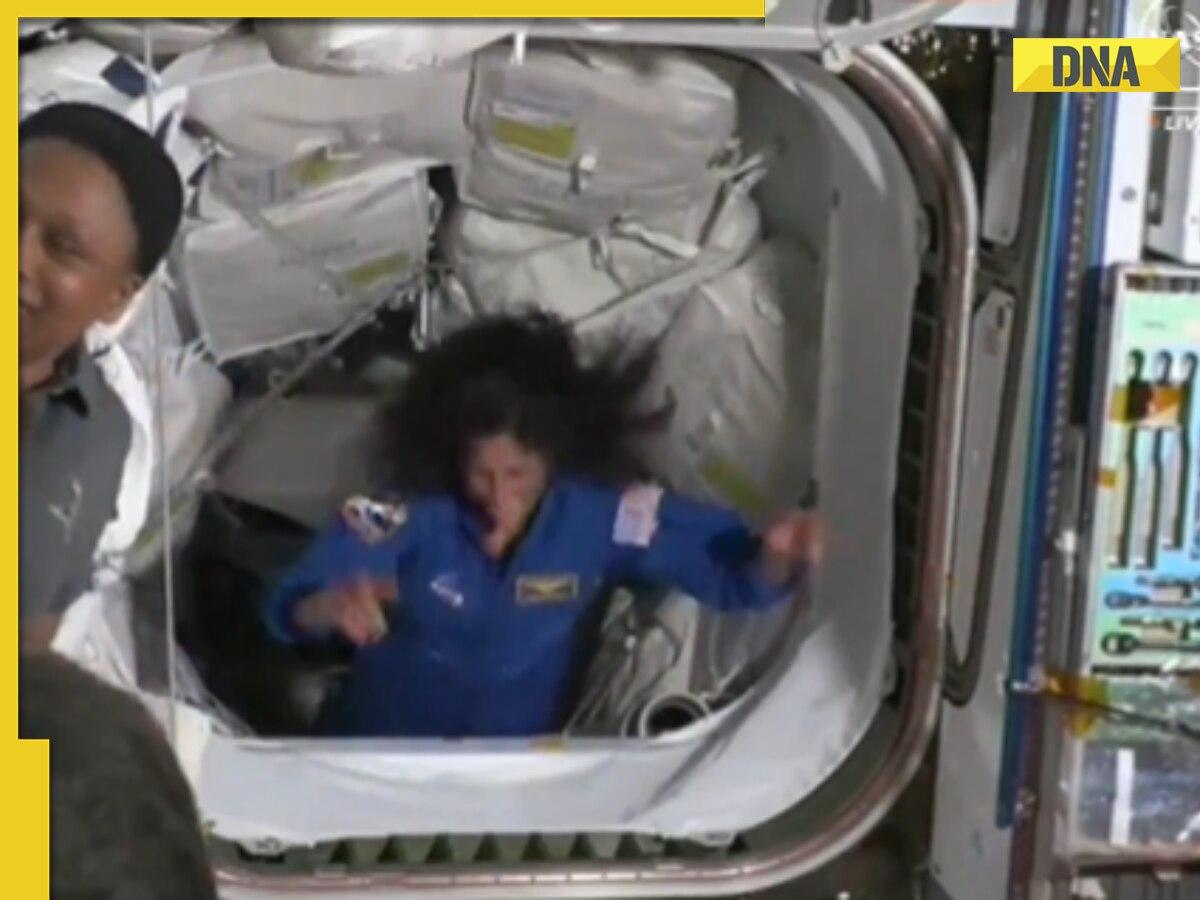
The Boeing Starliner spacecraft, successfully launched by NASA from Cape Canaveral Space Station in Florida, has achieved a safe docking at the International Space Station (ISS). This monumental event was notably marked by the presence of veteran NASA astronauts Sunita Williams and Butch Wilmore on board. While the mission itself represents a significant leap forward in space exploration, it was Williams’ remarkable moment of joy upon reaching the ISS that captured the attention of people worldwide.
This mission is historic in more ways than one. Sunita Williams has now become the first female astronaut to pilot a crewed spacecraft on its maiden voyage, setting a new standard for future space missions. The launch and subsequent docking were meticulously followed on social media platforms, and a particular highlight emerged from this attention: a viral video showing Williams’ unbridled excitement as she entered the ISS.
The video, shared by NASA on X (formerly known as Twitter), has taken the internet by storm. It captures Williams dancing exuberantly and embracing her fellow crew members on the ISS. The joyous occasion was encapsulated in the video caption that read, “That feeling when you’re back on the station! Butch Wilmore and Sunita Williams are greeted by the space station crew after Boeing Space Starliner’s first crewed journey from Earth.”
The scene begins with Williams entering the ISS through the forward-facing port of the Harmony module. Her radiant smile and jubilant dance movements perfectly conveyed the excitement of returning to the ISS. Upon entry, she was warmly received with hugs by the astronauts already onboard, creating a heartwarming moment that quickly resonated with millions.
Within just eight hours of its release, the video amassed over 270,000 views and garnered nearly 1,600 likes. Many users took to the comments section to express their admiration and excitement, with one user remarking, “What a space day.” Another added, “Quite the feat! I’d love to learn more about the system that tracked Starliner’s trajectory during the docking process.” A third user simply stated, “Amazing achievement.”
This mission held more than just emotional significance.
. NASA reported that during the flight, both Williams and Wilmore conducted critical manual piloting demonstrations. They also managed to complete a sleep period en route to the ISS, showcasing their ability to adapt to the rigorous demands of space travel.
Sunita Williams is no stranger to the cosmos. Her experience is both vast and impressive, with a total of 322 days spent in space over two earlier missions in 2006 and 2012. During these missions, she conducted seven spacewalks, further cementing her reputation as one of NASA’s most accomplished astronauts.
The mission’s success with the Boeing Starliner underscores the importance of this new chapter in crewed spaceflight. The spacecraft has proven its capability to safely transport astronauts and successfully dock at the ISS, a critical milestone for NASA and Boeing alike. This success opens the door to more robust and routine space missions in the future, broadening the horizon for human space exploration.
Beyond the technological triumphs, Sunita Williams’ personal achievements bring an added layer of inspiration. Her ability to break barriers and set new records serves as a compelling reminder of the ongoing advancements in space exploration. This event not only highlights her exceptional career but also demonstrates the powerful human spirit that drives exploration and discovery.
As the space community celebrates this latest milestone, the accomplishments of Williams and her fellow astronauts will undoubtedly inspire the next generation of space explorers. With each successful mission, humanity takes another step towards unraveling the mysteries of the cosmos and expanding the boundaries of what is possible.
In closing, the emotional and historical significance of this mission cannot be overstated. The sight of Sunita Williams dancing with joy upon reaching the ISS serves as a symbol of human triumph and the relentless pursuit of knowledge. As NASA and its partners continue to innovate and push the limits of space travel, the legacy of missions like this one will continue to encourage and motivate us all.












